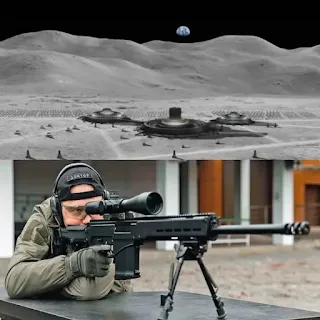The US Space Agency awarded a construction technology company $60 million to build a house on the moon by 2040.
The plan is to launch a giant 3D printer to the moon and use lunar concrete made of rocks, metal fragments and dust to create the structure on the surface layer by layer.
NASA is also working with universities and private companies to build doors, tiles and furniture for the Moon House.
The plans are still in the very early stages, with renderings only available from 2022 to paint a picture of what the house could look like, and the idea may change over the next decade.
Austin (Texas)-based ICON, which was awarded a NASA contract in 2022, is using its 3D printing expertise on Earth and building luxury homes layer by layer using its The Vulcan system.
All components of the house - for example, walls and roof - are printed separately and then assembled together.
The printer can create these structures in less than 48 hours.
ICON has been in the 3D printing business since 2018 and has built more than 100 homes in North Austin.
Raymond Clinton, 71, deputy director of the Office of Science and Technology at NASA's Marshall Space Flight Center, told the New York Times: “When we talk about sustainable human presence, to me that means you have a lunar settlement and you have people living and working on the moon on a regular basis.” continuous. “What this could be is up to the imagination of the entrepreneurs.”
ICON noted that infrastructure must better protect against heat, radiation and micrometeorites.
“Evidence supporting life outside Earth.” Scientists discover a source of carbon dioxide on the moon Europa.
NASA will first have to prepare landing pads for rockets to carry the 3D printer to the moon's surface.
These stations will be far from habitats to mitigate the dust rising during landing and take-off.
“To change the 'there and back there to stay' space exploration paradigm, we will need robust, resilient systems capable of broadly utilizing the local resources of the Moon and other planetary bodies,” said Jason Ballard, co-founder and CEO of ICON.
ICON plans to test its printer at NASA's Marshall Space Flight Center next February to see how it handles vacuum conditions and radiation levels in space.
But it will all stop when NASA prepares landing pads on the moon.
NASA is scheduled to launch the second stage of the Artemis mission in 2024, which will send astronauts around the moon.
Then, in 2025 or 2026, the space agency will return humans to the Moon on the Artemis 3 mission.
Launch of industrial production of Russian Shokavin snipers
The press service of the Russian company "Kalashnikov" reported the launch of the process of serial industrial production of the promising Russian "Chukavin" sniper rifles.
It indicated that it had passed efficiency tests, confirming a high level of efficiency and safety.
According to the head of the Kalashnikov company, Alan Luchnikov, the Chukavin snipers (SVCH) are a new generation of sniper rifles that meet all modern requirements and conditions. The latest types of additional devices can be installed on it, such as a silencer, a laser target designation device, and thermal, night, and infrared aiming devices, whether Russian or foreign-made.
The company's president recalled that the "Chukavin" sniper, which was designed to replace the legendary Soviet "SVD" sniper, was unveiled for the first time at the "Army Forum - 2017" international military-technical exhibition. Chukavin snipers are designed to injure enemy manpower at short and medium distances. Their small dimensions enable the sniper to use them as an additional weapon in close combat if necessary.
The rifle was developed taking into account the requirements for comfort conditions. The new snipers allow taking into account the individual characteristics of the sniper and the specifications of his equipment.
Different versions of this weapon can use Russian-made 7.62×54 ammunition or Western-made 308 Winchester and 338 LM rounds. The new Russian snipers can also use the 7H1 or 7H14 armor-piercing rounds.

